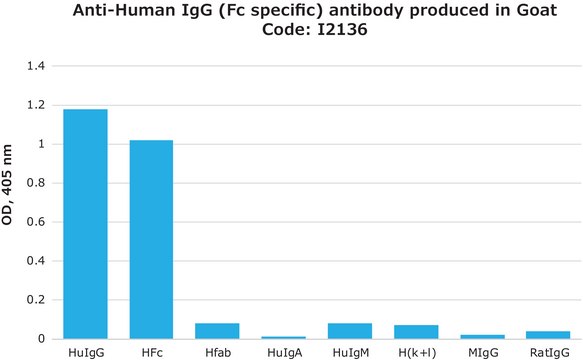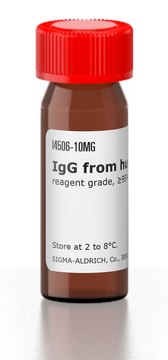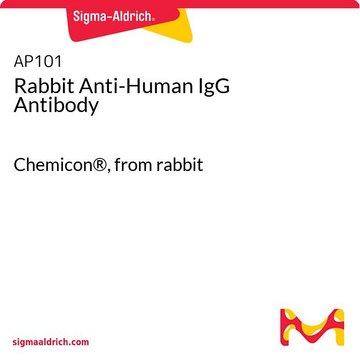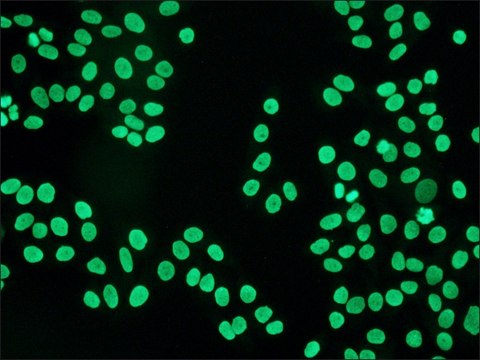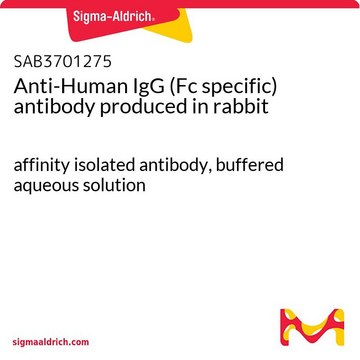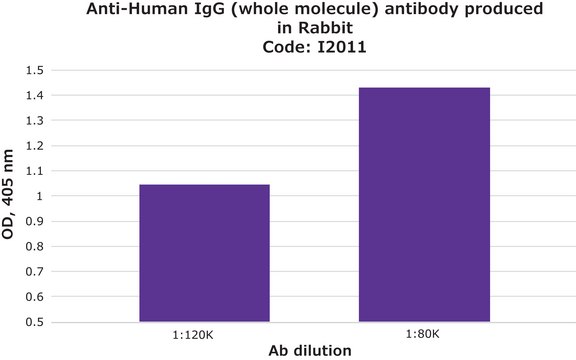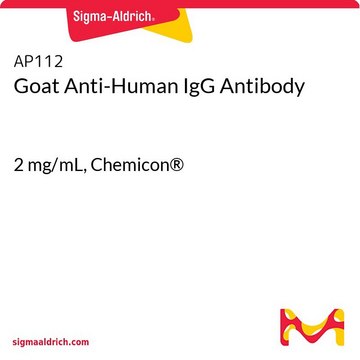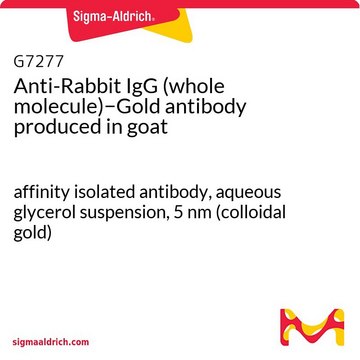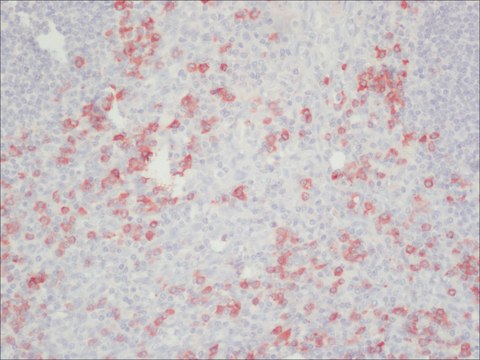推荐产品
生物来源
rabbit
质量水平
偶联物
unconjugated
抗体形式
whole antiserum
抗体产品类型
secondary antibodies
克隆
polyclonal
包含
15 mM sodium azide
技术
indirect ELISA: 1:60,000
quantitative precipitin assay: 2.5 mg/mL
运输
dry ice
储存温度
−20°C
靶向翻译后修饰
unmodified
正在寻找类似产品? 访问 产品对比指南
一般描述
Immunoglobulins (Igs) belongs to the immunoglobulin super-family. There are five different types of Immunoglobulins. Each immunoglobin has two heavy (H) and two light (L) chains, held together by disulphide linkages. Each light chain comprises of one variable N-terminal region and a constant C-terminal region. Heavy chain has one variable N-terminal region and three or four constant (CH1-CH4) C-terminal regions. The four classes of IgG can be IgG1, IgG2, IgG3, and IgG4.
应用
Anti-Human IgG (whole molecule) antibody produced in rabbit has been used in enzyme linked immunosorbent assay.
生化/生理作用
IgG antibody subtype is the most abundant of serum immunoglobulins of the immune system. It is secreted by B cells and is found in blood and extracellular fluids and provides protection from infections caused by bacteria, fungi and viruses. Maternal IgG is transferred to fetus through the placenta that is vital for immune defense of the neonate against infections.
IgG1 deficiency results in hypogammaglobulinemia. IgG2 deficiency increases susceptibility to bacterial infections, IgG3 mediates effector functions and IgG4 is associated with asymptomatic infection. IgG antibodies have enormous therapeutic potential and the Fc region is for the development of therapeutic antibody.
制备说明
delipidized
免责声明
Unless otherwise stated in our catalog or other company documentation accompanying the product(s), our products are intended for research use only and are not to be used for any other purpose, which includes but is not limited to, unauthorized commercial uses, in vitro diagnostic uses, ex vivo or in vivo therapeutic uses or any type of consumption or application to humans or animals.
未找到合适的产品?
试试我们的产品选型工具.
储存分类代码
10 - Combustible liquids
WGK
WGK 3
闪点(°F)
Not applicable
闪点(°C)
Not applicable
个人防护装备
Eyeshields, Gloves, multi-purpose combination respirator cartridge (US)
法规信息
常规特殊物品
历史批次信息供参考:
分析证书(COA)
Lot/Batch Number
Antibodies reacting with human immunoglobulin in sera from autoimmune thyroid disease patients as a risk factor for false positive results in IgA assessment
Haroun M and El-Masry MH
Central European Journal of Immunology, 33, 208-212 (2008)
Molecular properties of human IgG subclasses and their implications for designing therapeutic monoclonal antibodies against infectious diseases
Irani V, et al.
Molecular Immunology, 67 (2015)
Structure and function of immunoglobulins.
Schroeder Jr H W and Cavacini L
The Journal of Allergy and Clinical Immunology, 125(2), S41-S52 (2010)
Gestur Vidarsson et al.
Frontiers in immunology, 5, 520-520 (2014-11-05)
Of the five immunoglobulin isotypes, immunoglobulin G (IgG) is most abundant in human serum. The four subclasses, IgG1, IgG2, IgG3, and IgG4, which are highly conserved, differ in their constant region, particularly in their hinges and upper CH2 domains. These
S Hashira et al.
Pediatrics international : official journal of the Japan Pediatric Society, 42(4), 337-342 (2000-09-15)
Maternal immunoglobulin G (IgG), transferred across the placenta to the fetus during intrauterine life, is an important component of the neonatal immunological defence mechanisms against infection. There is controversy with respect to differences in placental transfer of the different IgG
我们的科学家团队拥有各种研究领域经验,包括生命科学、材料科学、化学合成、色谱、分析及许多其他领域.
联系技术服务部门